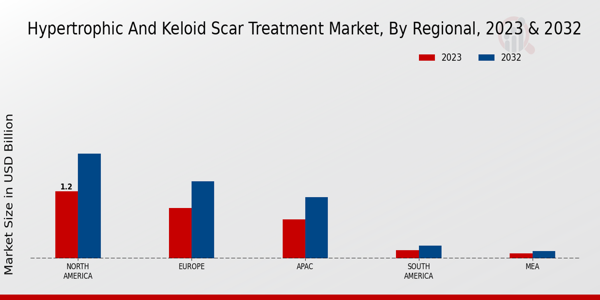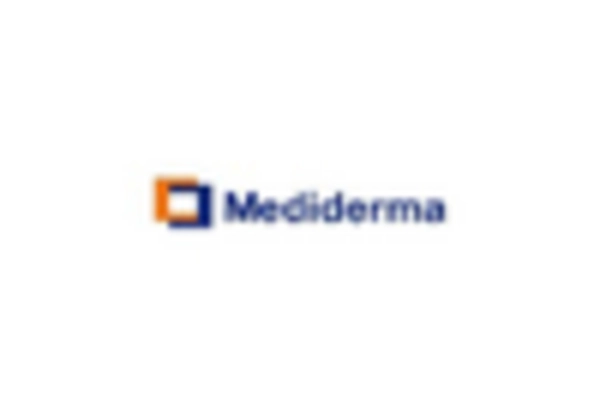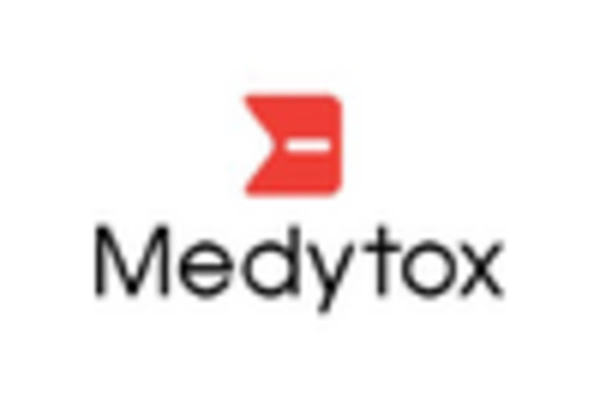Growing Awareness of Scar Management
The increasing awareness regarding scar management is a pivotal driver for the Hypertrophic and Keloid Scar Treatment Market. Patients are becoming more informed about the options available for scar treatment, leading to a higher demand for effective solutions. Educational campaigns and resources provided by healthcare professionals contribute to this awareness. As a result, the market is witnessing a surge in the adoption of various treatment modalities, including silicone gel sheets and corticosteroid injections. This heightened awareness is expected to propel the market forward, as individuals seek to improve their quality of life by addressing the psychological and physical impacts of hypertrophic and keloid scars.
Advancements in Treatment Technologies
Advancements in treatment technologies are reshaping the landscape of the Hypertrophic and Keloid Scar Treatment Market. Innovations such as laser therapy, cryotherapy, and radiofrequency treatments are gaining traction due to their effectiveness in scar reduction. These technologies offer patients less invasive options with quicker recovery times, appealing to a broader audience. The market is projected to grow as these advanced modalities become more accessible and affordable. Furthermore, ongoing research and development efforts are likely to yield new treatment options, enhancing the overall efficacy of scar management and attracting more patients seeking effective solutions.
Growing Demand for Aesthetic Procedures
The growing demand for aesthetic procedures is significantly impacting the Hypertrophic and Keloid Scar Treatment Market. As individuals increasingly prioritize their appearance, the need for effective scar treatments has become more pronounced. Aesthetic procedures, including cosmetic surgeries and skin rejuvenation treatments, often lead to scar formation, prompting patients to seek solutions for scar management. This trend is further fueled by the rise of social media and the influence of beauty standards, which encourage individuals to pursue flawless skin. Consequently, the market is poised for growth as more patients seek treatments that not only address scars but also enhance their overall aesthetic appeal.
Rising Incidence of Skin Injuries and Surgeries
The rising incidence of skin injuries and surgical procedures is significantly influencing the Hypertrophic and Keloid Scar Treatment Market. As more individuals undergo surgeries or experience trauma, the likelihood of developing hypertrophic and keloid scars increases. According to recent data, surgical procedures have been on the rise, with millions performed annually, leading to a corresponding increase in scar formation. This trend is particularly evident in cosmetic and reconstructive surgeries, where the need for effective scar management is paramount. Consequently, the market is expected to expand as healthcare providers seek innovative treatments to address the growing number of patients requiring scar interventions.
Increasing Investment in Dermatological Research
The increasing investment in dermatological research is a crucial driver for the Hypertrophic and Keloid Scar Treatment Market. Pharmaceutical companies and research institutions are allocating substantial resources to explore new treatment options and improve existing therapies. This focus on research is expected to lead to the development of novel drugs and therapies that specifically target hypertrophic and keloid scars. As a result, the market may experience a surge in innovative products that offer enhanced efficacy and safety profiles. The commitment to advancing dermatological science is likely to foster a competitive environment, ultimately benefiting patients seeking effective scar treatments.


















Leave a Comment